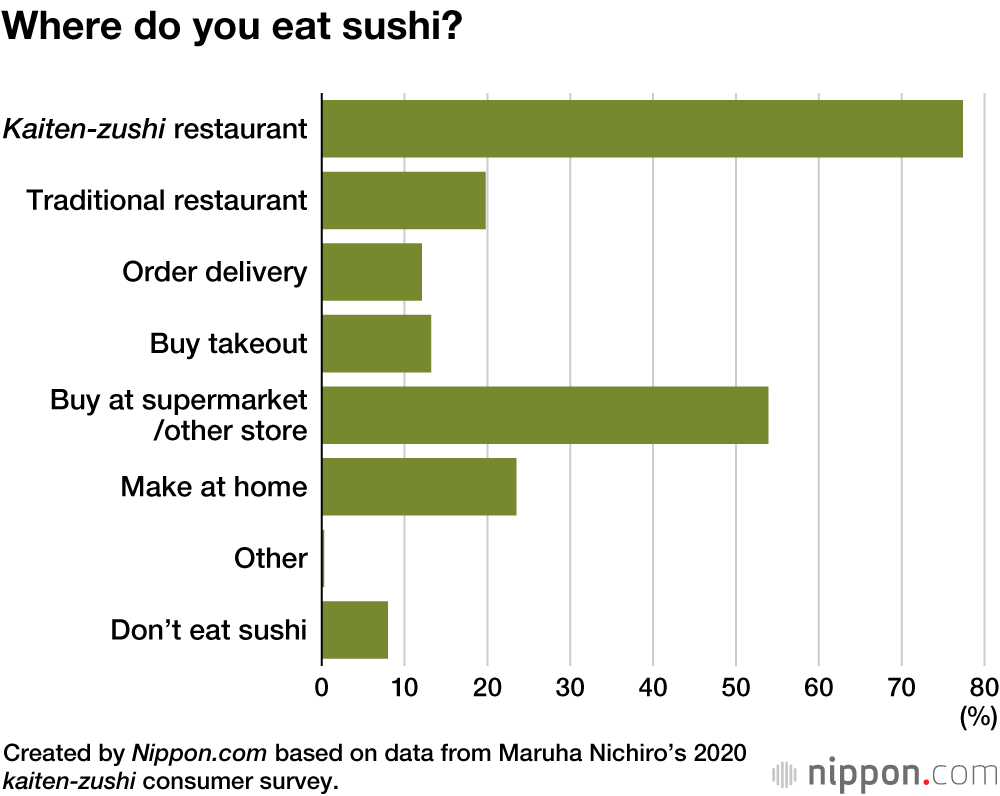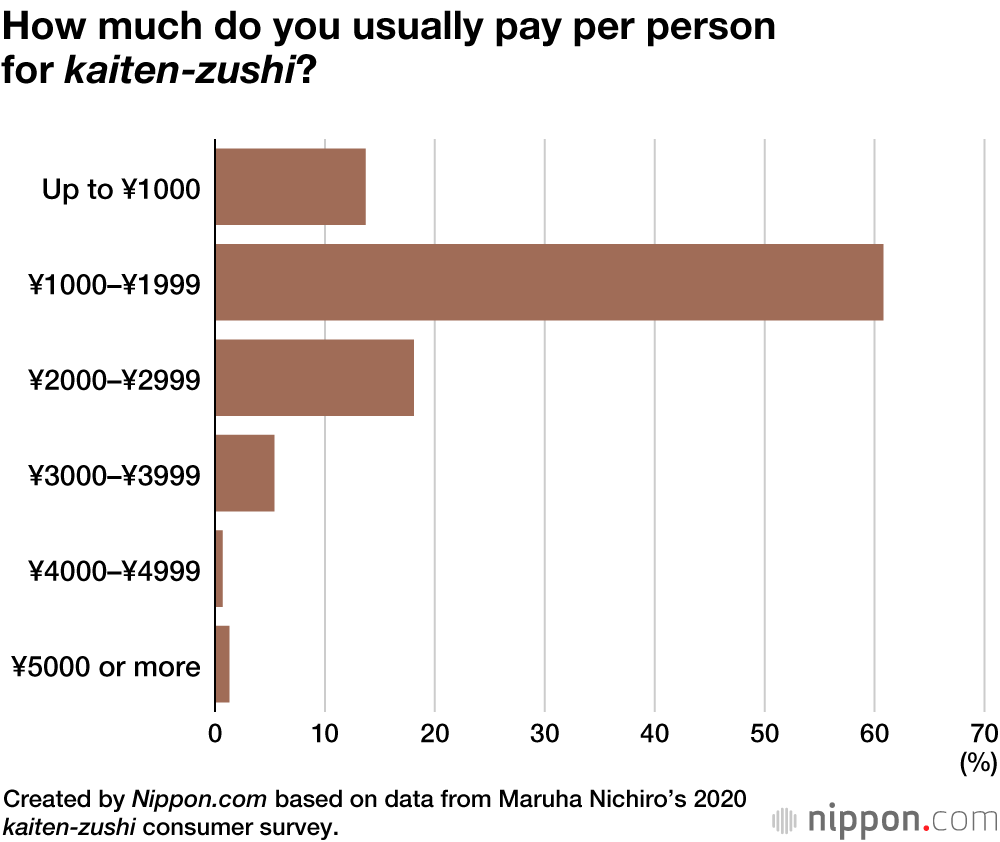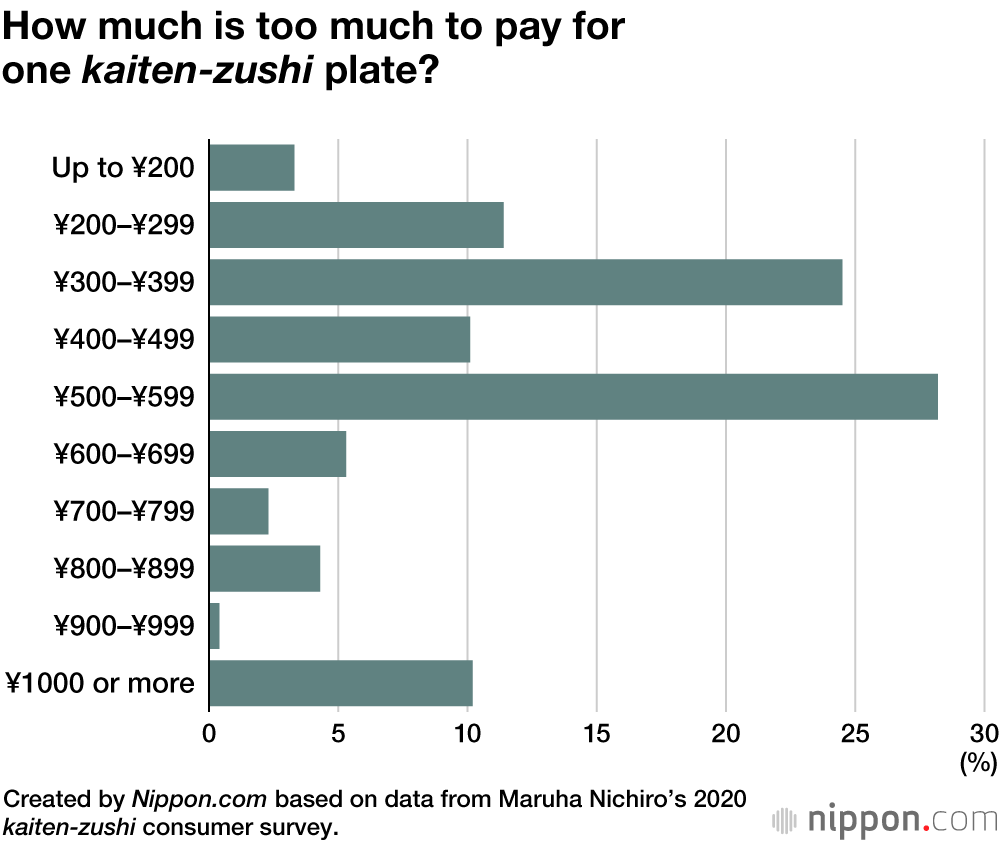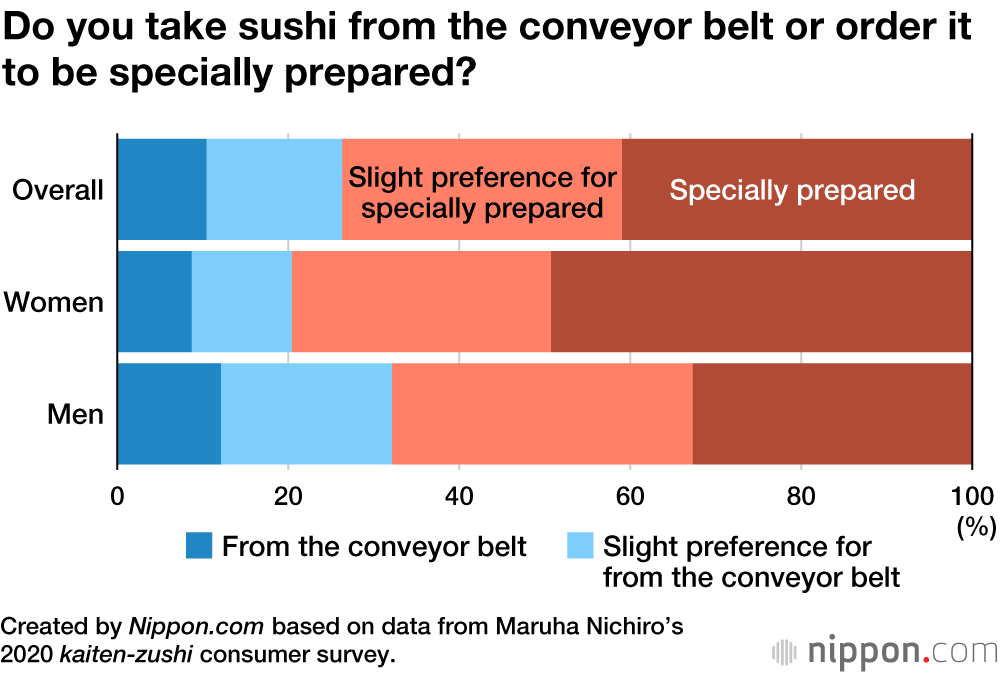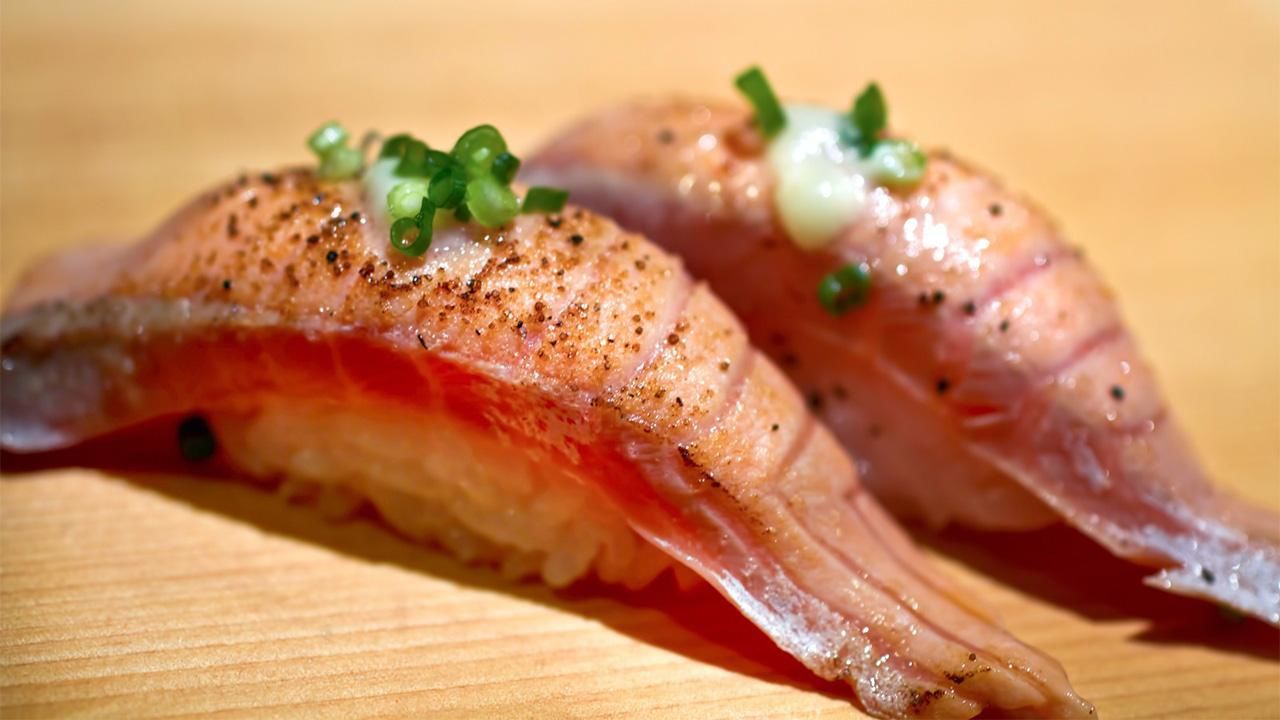
Salmon Most Eaten Topping at Japan’s Conveyor-Belt Sushi Restaurants
Food and Drink- English
- 日本語
- 简体字
- 繁體字
- Français
- Español
- العربية
- Русский
The first kaiten-zushi (conveyor-belt sushi) restaurant to open in Japan was Mawaru Genroku Sushi in Higashiosaka in April 1958. More than 60 years later, reasonably priced kaiten-zushi has become an indispensable part of life for Japanese people of all ages and some toppings have become firm favorites.
The seafood company Maruha Nichiro recently conducted its 2020 consumer survey on kaiten-zushi, targeting 13,595 men and women aged between 15 and 59 nationwide. When respondents were asked if they preferred to eat sushi at a restaurant or buy it to eat at home (multiple responses), an overwhelming 77.4% replied that they ate at kaiten-zushi restaurants.
The most common range for money spent on kaiten-zushi per person, indicated by 60.8% of respondents, was ¥1,000–¥2,000, and the average was ¥1,514. When asked how much would be too expensive to pay for one plate of sushi at these restaurants, 28.2% gave figures in the range of ¥500 to ¥599, with 24.5% for ¥300 to ¥399, while the overall average was ¥538.
Regarding toppings that people ate the most, 47.3% answered salmon, well ahead of akami (lean tuna) in second place with 33.5%. Salmon has remained top choice for the last nine consecutive years since the 2012 survey. On the other hand, people often refrain from eating expensive toppings like ōtoro (fatty tuna), chūtoro (medium fatty tuna), uni (sea urchin), and awabi (abalone).
Sushi Toppings Most Often Eaten
| Salmon | 47.3% |
| Akami (lean tuna) | 33.5% |
| Chūtoro (medium-fatty tuna) | 29.8% |
| Hamachi/buri (yellowtail) | 28.3% |
| Ebi (shrimp) | 27.9% |
| Negitoro (minced tuna) | 22.3% |
| Ika (squid) | 21.4% |
| Engawa (flounder fin) | 21.3% |
| Ikura (salmon roe) | 19.1% |
| Aji (horse mackerel) | 16.5% |
Created by Nippon.com based on data from Maruha Nichiro’s 2020 kaiten-zushi consumer survey.
Toppings People Often Refrain from Eating
| Ōtoro (fatty tuna) | 22% |
| Uni (sea urchin) | 9.6% |
| Chūtoro (medium-fatty tuna) | 9.2% |
| Awabi (abalone) | 5.7% |
| Ikura (salmon roe) | 4.9% |
| Unagi (eel) | 4.8% |
| Kani (crab) | 4.2% |
| Kinmedai (splendid alfonsino) | 3% |
| Hotate (scallop) | 2.9% |
| Kaki (oyster) | 2.2% |
Created by Nippon.com based on data from Maruha Nichiro’s 2020 kaiten-zushi consumer survey.
Interestingly, salmon placed number one for both the sushi topping people eat first and the one that they like to end the meal with. It seems that people are not eating salmon just because their favored choices are more expensive, but rather that it has established itself as a firm favorite with consumers.
Favorite Topping to Eat First
| Salmon | 20.9% |
| Akami (lean tuna) | 11.7% |
| Hamachi/buri (yellowtail) | 7.5% |
| Ebi (shrimp) | 6.0% |
| Engawa (flounder fin) | 4.8% |
Created by Nippon.com based on data from Maruha Nichiro’s 2020 kaiten-zushi consumer survey.
Favorite Topping to End the Meal
| Salmon | 11.8% |
| Tekkamaki (tuna sushi roll) | 4.7% |
| Akami (lean tuna) | 4.6% |
| Chūtoro (medium-fatty tuna) | 4.5% |
| Egg | 4.2% |
Created by Nippon.com based on data from Maruha Nichiro’s 2020 kaiten-zushi consumer survey.
When respondents were asked if they were more likely to pick dishes that circulated on the belt or those they ordered to be specially prepared, 73.8% said they liked to have the sushi prepared for them. Even when opting for the convenience of kaiten-zushi, having the sushi freshly prepared makes it more delicious. Women, in particular, showed a focus on taste, with 80% preferring to order specially.
(Translated from Japanese. Banner photo: © Pakutaso)
